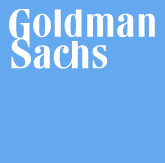
Nearly two months ago the FX industry was engulfed in the historically tranquil volumes with banks worldwide grappling diminished revenues and volumes, leading to broad-based personnel movements.
However, just a couple months later, the financial industry stands at a key precipice as banks embrace slingshotting revenues helped in large part by swelling FX volumes and activity, nowhere more so than in the United States.
A Year To Forget
2014 has been a year to forget for many US banks, given the negative stigma associated with a debilitating FX probe by global regulators alleging market manipulation. H2 of 2014 proved even more unkind, as a galvanized FX industry in the US saddled banking revenues that drew the ire of worldwide investors.
Amidst rebounding volumes into October, one can plainly see the correlation between profitability and fixed income, currencies and commodities business (FICC) however – which had already begun to gain momentum in Q3.
Indeed, since September, institutional and retail FX volumes have swelled, likely heralding the end of a Volatility drought that shackled FX traders worldwide for several months. This has also been helped in large part by the backing of the US dollar by market participants, given the expectation of the emergence of interest rate differentials as well as a departure from Federal bond buying programs.
Earnings Call
This has already been reflected in several companies quarterly metrics, including Goldman Sachs, which jumped 73% YoY in Q3. Conversely, Bank of America Merrill Lynch and JPMorgan each grew 11% and 2% respectively during this same time.

Just yesterday Goldman Sachs (NYSE:GS) crushed analyst expectations, which portended earnings of $3.21 per share on $7.82 billion in revenue, instead posting earnings of $4.57 per share on $8.39 billion in revenue, buoyed in large part by FX.
According to a statement by Goldman Sachs in its earnings release yesterday, "the increase in net revenues in [Ficc] was due to significantly higher net revenues in currencies...[the business] continued to operate in an environment characterized by generally low levels of activity, although during the latter part of the quarter, market-making conditions were generally more favorable."
"We have seen a significant increase in trading activity this month. September's average daily value of US$5.94 trillion is up by a fifth from August 2014, and is the highest in CLS's 12-year history. Despite the low-volatility environment in the FX market for much of 2014, values settled in CLS have remained stable, with an average daily Settlement value for the year to date of over US$5 trillion," added David Puth, Chief Executive of CLS who released a statement on the uptick of trading activity.

















